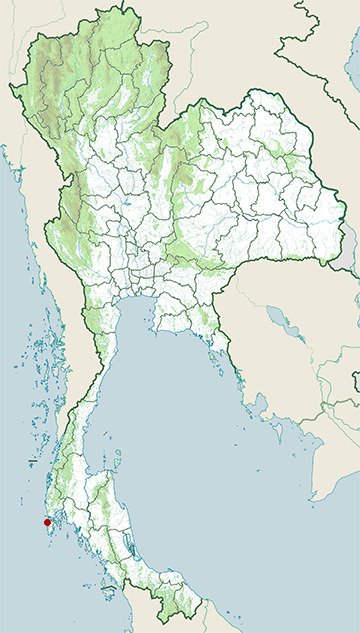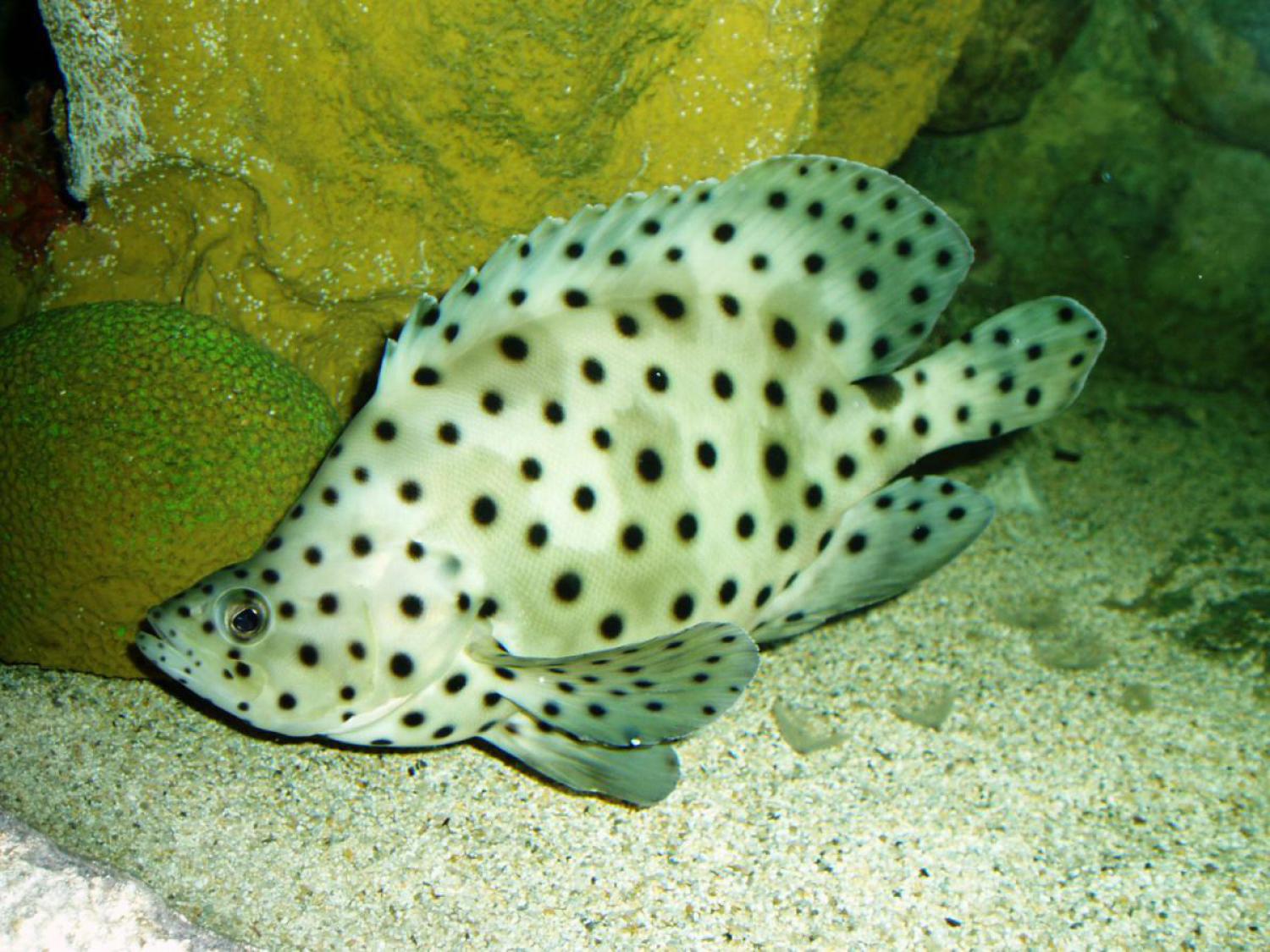Species of Thailand
Humpback grouper
Cromileptes altivelis
Achille Valenciennes, 1828
The humpback grouper, panther grouper, or (in Australia) barramundi cod (Cromileptes altivelis) is a demersal marine fish which belongs to the family Serranidae, the groupers.
Systematics
Recent molecular analyses based on five genes show that Cromileptes altivelis is included in the same clade as species of Epinephelus. Consequently, the species should be included in Epinephelus as Epinephelus altivelis.
Description
The humpback grouper is a medium-sized fish which grows up to 70 cm.
Its particular body shape makes this grouper quite impossible to mix up with other fishes. Its body is compressed laterally and is relatively high. This stocky and strange visual effect is accented by its concave profile and its elongated snout which gives it a humpbacked appearance.
The young have a white background with round black spots and are continuously swimming head down. The adults have a body colouration with variances of grey and beige with darker blotches variable in size on the body. Small black spots cover the whole body.
Distribution and habitat
It is widely distributed throughout the tropical waters of the central Indo-West Pacific region. The humpback grouper lives in clear waters from lagoons and seaward reefs with a preference for dead or silty areas. They are found in a range of depth from 2 to 40 m.
In 2012, a single individual was speared in the waters off South Florida, raising fears that it could become invasive, similar to the lionfish.
Feeding and behaviour
The diet of this grouper is based on small fishes and crustaceans. Like the members of its family, the humpback grouper is demersal, solitary (except during mating periods), defends a territory, and is an ambush predator. Its feeding activity is maximal at sunrise and/or at sunset. This species is a protogynous hermaphrodite; in other words, all individuals are born female, with the ability to transform to males as they grow older. Typically, only the most dominant, mature females undergo this transformation in the absence of a dominant male.
Protection
Since 2007, C. altivelis is listed as vulnerable on the IUCN Red List of Threatened Species, because the species is naturally rare, so is sensitive to overharvesting due to its high value in the live food fish trade and to habitat degradation. Hatchery production is not intended for reintroduction, but instead for the aquarium trade, so does not result in an increase in the natural population or a decrease in demand as food.
In the aquarium
This grouper is commonly kept in marine aquaria. Great care must be taken when purchasing this fish, as it can reach 50 cm (20 in), and is fast-growing. Its large adult size and fast growth rate means it should only be kept in large aquaria. If kept in the proper conditions, this is a very hardy and long-lived fish.
This article uses material from Wikipedia released under the Creative Commons Attribution-Share-Alike Licence 3.0. Eventual photos shown in this page may or may not be from Wikipedia, please see the license details for photos in photo by-lines.
Scientific classification
- Kingdom
- Animalia
- Phylum
- Chordata
- Class
- Actinopterygii
- Order
- Perciformes
- Family
- Serranidae
- Genus
- Cromileptes
- Species
- Cromileptes altivelis
Conservation status
Data Deficient (IUCN3.1)
Photos
Please help us review our species pages if wrong photos are used or any other details in the page is wrong. We can be reached via our contact us page.
Range Map

- Phuket Coast
